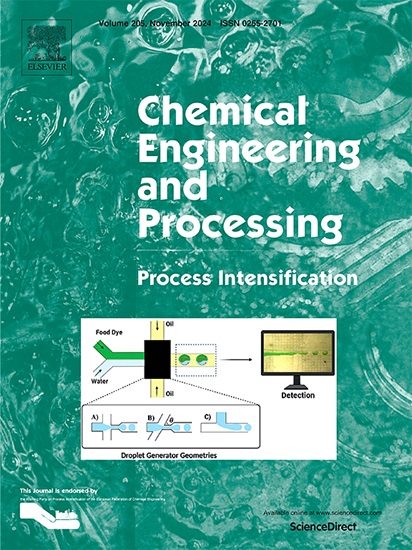从废锂离子电池正极材料中回收有价金属
IF 3.8
3区 工程技术
Q3 ENERGY & FUELS
Chemical Engineering and Processing - Process Intensification
Pub Date : 2025-05-09
DOI:10.1016/j.cep.2025.110358
引用次数: 0
摘要
热力学分析表明,还原剂焦炭在1300 ~ 1500℃时可将Co3O4、CoO和NiO还原为Co和Ni。当温度高于1402℃时,MnO2逐渐碳热还原为Mn2O3、Mn3O4和MnO, MnO则逐渐还原为金属Mn。研究了熔炼温度、Na2CO3添加量和熔炼时间对渣中锂保留率的影响。采用10 ~ 20%的Na2CO3作为添加剂,可以抑制锂离子电池三元正极材料冶炼过程中Li的挥发损失,实现渣中Li的富集。当熔炼温度为1300℃,Na2CO3添加量为20%,熔炼时间为60 min时,渣中Li的保留率高达96.37%。1300℃熔炼120 min所得产物的FAAS、XRD和SEM-EDS分析表明,金属产物的主要相为Co和Ni,其中Ni、Co、Mn和Fe的质量分数分别为52.9%、19.4%、8.3%和3.1%。1300℃熔炼60 min后的渣用90℃液固比为2:1的硫酸浸出60 min,锂的浸出率为82.11%。本文章由计算机程序翻译,如有差异,请以英文原文为准。

Recovery of valuable metals from cathode material from spent lithium-ion batteries
Thermodynamic analysis shows that reducing agent coke can reduce Co3O4, CoO and NiO to Co and Ni at 1300–1500 °C. MnO2 is gradually carbothermal reduced to Mn2O3, Mn3O4 and MnO, while MnO is reduced to metallic Mn when the temperature is higher than 1402 °C. The effects of smelting temperature, Na2CO3 addition and smelting time on the retention rate of Li in slag have been studied. Using 10–20 % Na2CO3 as an additive can inhibit the volatilization loss of Li during the smelting of ternary cathode materials of lithium-ion batteries, and realize the enrichment of Li in slag. When the smelting temperature is 1300 °C, Na2CO3 addition is 20 %, and the smelting time is 60 min, the retention rate of Li in slag is as high as 96.37 %. FAAS, XRD and SEM-EDS analysis of products obtained by smelting at 1300 °C for 120 min show that the main phases of metal product were Co and Ni, among which the mass fractions of Ni, Co, Mn, and Fe are 52.9 %, 19.4 %, 8.3 % and 3.1 %, respectively. The residue after smelting at 1300 °C for 60 min is leached by sulfuric acid with the liquid-solid ratio of 2:1 at 90 °C for 60 min, and the leaching rate of Li is 82.11 %.
求助全文
通过发布文献求助,成功后即可免费获取论文全文。
去求助
来源期刊
CiteScore
7.80
自引率
9.30%
发文量
408
审稿时长
49 days
期刊介绍:
Chemical Engineering and Processing: Process Intensification is intended for practicing researchers in industry and academia, working in the field of Process Engineering and related to the subject of Process Intensification.Articles published in the Journal demonstrate how novel discoveries, developments and theories in the field of Process Engineering and in particular Process Intensification may be used for analysis and design of innovative equipment and processing methods with substantially improved sustainability, efficiency and environmental performance.

 求助内容:
求助内容: 应助结果提醒方式:
应助结果提醒方式:


